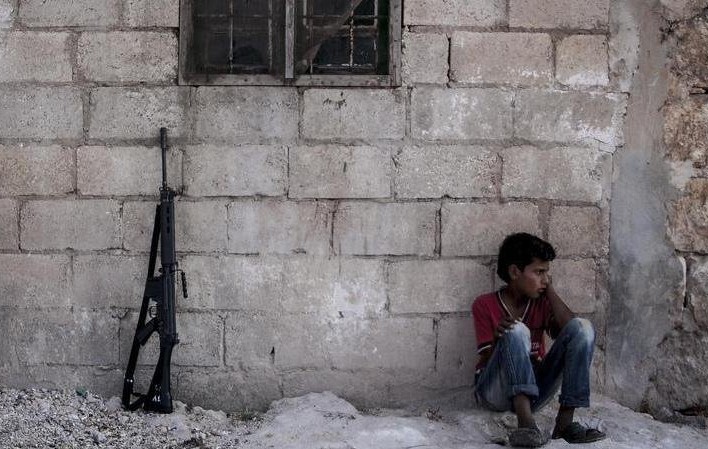AP photo
By
Binoy Kampmark
It has attracted money and the implementation of programs, another standard diversionary tactic common in many societies. It is all touted as a good bit of social engineering, a form of anger management by other means. The basis of that problematic term “deradicalisation” entails the erroneous idea that telling a person something should not be done politically is necessarily going to be effective.
The subjective analogue on deradicalisation with Hamlet is apparent: “for there is nothing either good or bad, but thinking makes it so.” So, the teachers, pedagogues, social workers and lecturers have sought to persuade those young incipient jihadis that somehow, finding numerous virgins at the end of the tunnel of martyrdom is a bad idea. Best be a model citizen, seeking a dull job and treating politics, essentially, as a politician’s business. A country’s leaders can simply go on with their meddlesome ways, creating mischief overseas while proclaiming the virtues of stability at home.
The idea of deradicalisation starts off on a misstep, a malformed idea. It assumes that a person is going to turn rotten and rush off to the Middle East at any given moment unless the instructor nips such ambitions in the bud with appropriate ideals and suitable options. It also assumes that ideas, however developed or reasoned, can be cordoned, quarantined and varied.
Nor are the scholar squirrels and analysts entirely clear about what the initial stage – radicalisation – actually means. (The same goes for the term terrorism, a multi-headed beast of multi-headed meanings). Criminologist Kris Christmann has advanced no less than eight separate models on the process of deradicalisation while placing his finger on ten theoretical models.
A gaze through the literature is bewildering, whether one soddens one’s feet in Taarnby’s eight-stage recruitment process, wades through Wiktorowicz’s al-Muhajiroun model, or slugs through McCauley and Moskalenko’s twelve mechanisms of political radicalisation. Variety, in this world, is not the spice of the life so much as a muddle in the middle.
Little wonder then that Christmann’s report for the British Youth Justice Board Preventing Religious Radicalisation and Violent Extremism suggests, citing previous studies, that general scholarship on this is “impressionistic, superficial and often pretentious, venting far reaching generalisations on the basis of episodic evidence”.[1]
It also assumes that a person is only permitted to think in a certain, pleasing way: the orthodoxy of the state, the wisdom of the technocrats and politicians who supposedly operate on a Platonic plane of high reason.
This, essentially, amounts to a form of cerebral amputation, a reverse brainwashing supposedly designed to respond, as a targeted sonic boom, to the brainwashing methods of the madrassa. It is a political strategy designed to neuter the potentially radical subject, while also instilling a dull, mute conformity. It is, in short, reactive, pre-emptive, and unimaginative.
While this should not be taken as a hearty endorsement of the gun toting antics of an Islamic State recruit, the state obsession with curtailing a youth’s understanding of political or religious destiny (in Islam, there is no functional difference on this point) is doomed to fail. All states insist on their brand of radicalisation, whatever the popular ideology of the day.
The attempt by such countries as the United States, Britain, France, and Australia to claim clarity above the radical politics of the Middle East also suggests a remarkable confusion. Deradicalisation programs are themselves facing an impossible end: attempting to convince youths that they not take up arms against a state that itself is engaged in war in Muslim countries, or that their adventurist spirit must somehow be channelled.
Added to this is the parallel legal world that has grown up in response to terrorism, known more broadly as the counter-terrorist response. As Irfan Yusuf noted in 2016, there were 64 separate pieces of counter-terrorism legislation and measures introduced onto the law books between 2001 and 2014 in Australia alone.[2]
The icing on this system, in turn, is the Countering Violent Extremism (CVE) program. Be it in legislation or in the CVE program confusion reigns over what constitutes an actual terrorist act, and what constitutes radicalisation itself.
In Syria, an epicentre of the radicalism debate, radical groups do battle against a form of secular violence; secular violence, through the Assad regime in Syria, is reasserted as a defender against radicalisation. It would be far more fitting to say that war is of its own accord the great agent of radicalisation, the fulcrum behind inspiring others to join it like moths to a flickering flame.
The general burden of proof for deradicalising youth tends to fail at the conceptual level. What it has led to is a sprawling set of programs with false assumptions. The obvious question, though one that is persistently ignored, is how a teenager with a spotless police record might still wish to seek glory in a distant land behind a gun.
[1] http://eprints.hud.ac.uk/16198/
[2] http://www.smh.com.au/comment/deradicalisation-programs-do-they-work-20160426-gofgi3.html



No Comments Yet!
You can be first to comment this post!